Weekend Diversion: Orion
The highlights of the greatest Winter Constellation of them all.
“I discerned huge Orion, driving wild beasts together over the field of asphodel, the very ones that he once had killed on lonely mountains, he grasped in his hands a mace of bronze, never to be broken.” –Odysseus, in the Underworld, Homer’s Odyssey
With a reputation as the greatest hunter ever and as one of the largest, tallest men ever, it’s no wonder that Orion lives on in both song,
and in our imaginations in the sky as well.
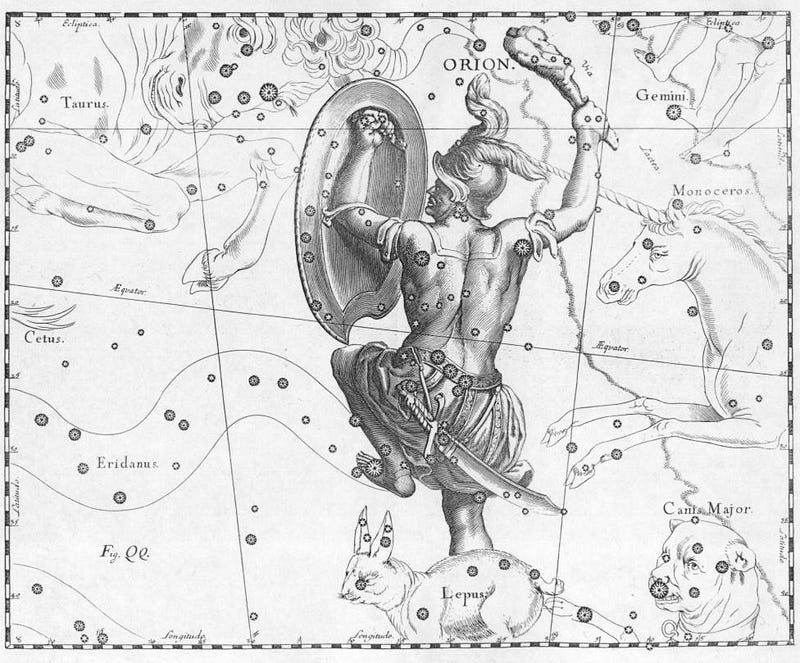
Orion is one of the most easily identifiable constellations in the sky; it was the second one I ever learned how to find, right after the Big Dipper. The three stars on Orion’s belt, as well as the four (limbs) enshrouding them, seem to leap out at you once you know what to look for.
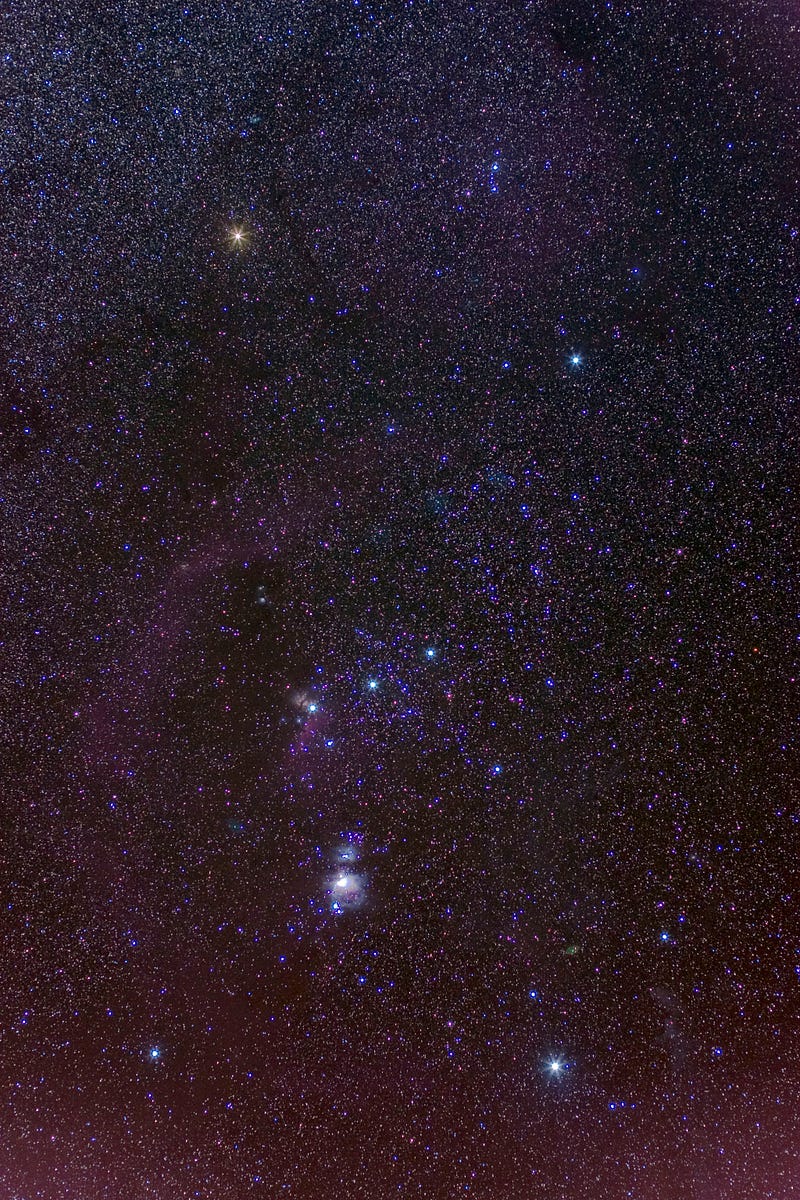
Orion features seven of the brightest stars in the night sky:
- Rigel (lower right), the 7th brightest of all,
- Betelgeuse (upper left), the 9th brightest (although it varies),
- Bellatrix (upper right), at number 27,
- Alnilam (the middle of the belt), at number 30,
- Alnitak (the left star of the belt), at number 31,
- Saiph (lower left), at number 52, and
- Mintaka (rightmost star of the belt), at number 69.
With the possible exception of nearby Bellatrix, all of these stars, around 1,000 light-years distant, will go supernova at some point in the not-too-distant future, with the orange supergiant Betelgeuse likely to go first.
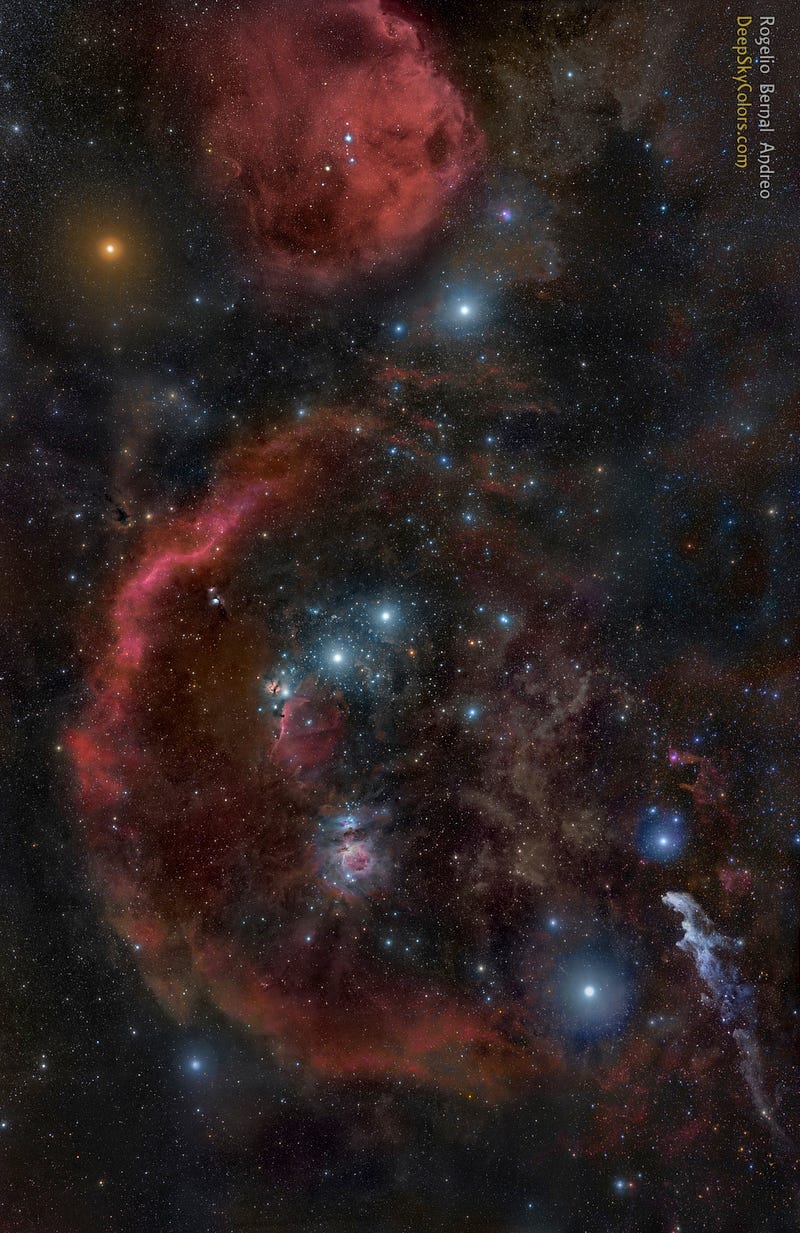
Amidst all the gas, dust and young stars in this active region of space — the closest one to Earth — is that little pink blob just below the belt. Although there are some bright, blue stars in there, you’re looking at the Great Orion Nebula, one of the only nebulae in the whole sky visible to the naked eye. Even through a small telescope, it’s wondrous to behold, as we saw last Monday.
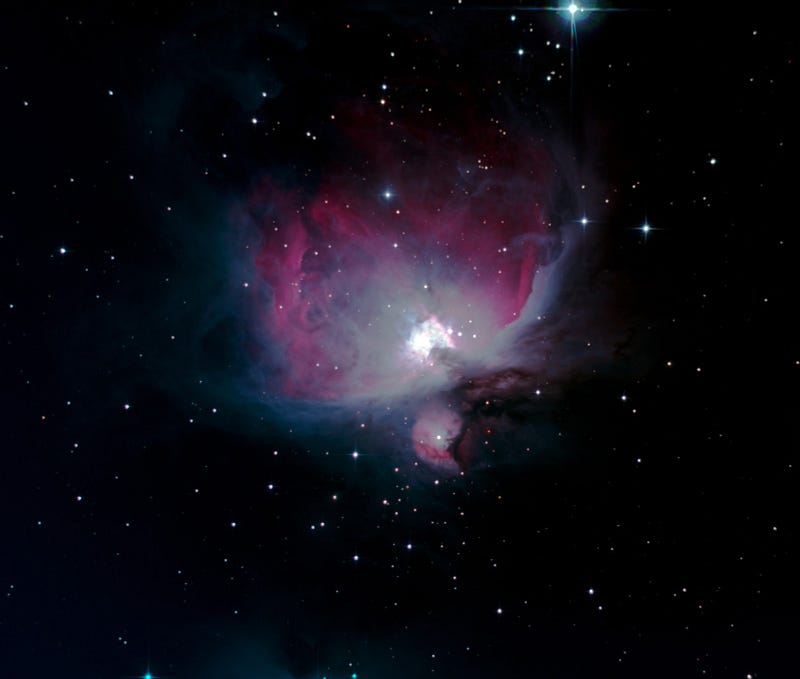
This, of course, is what you’ll see with your eyes, in visible light.
But there were other images that didn’t make the cut on our Messier Monday post, and it would be a shame to not share them with you now. You see, a whole lot more becomes visible if you look in non-optical wavelengths of light at this very same region.
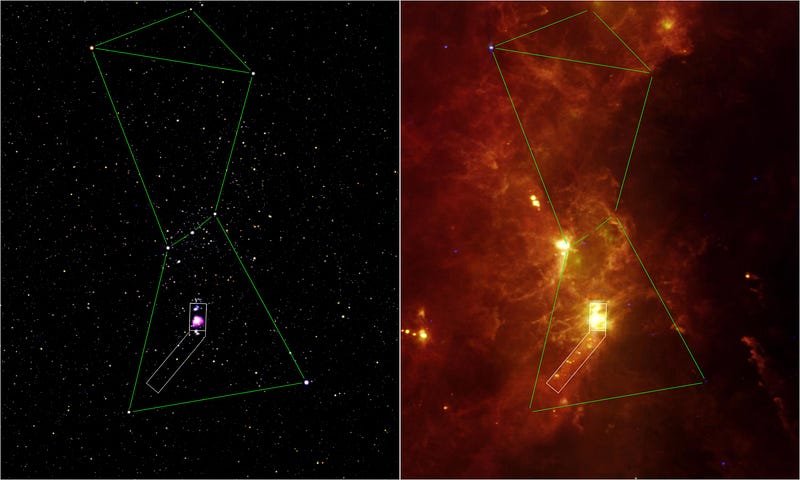
Taken in the infrared by the Spitzer Space Telescope (in yellow), and overlaid with X-ray emissions from ESA’s XMM-Newton (shown in blue), I bet the image below will leave you as awestruck as it did me.
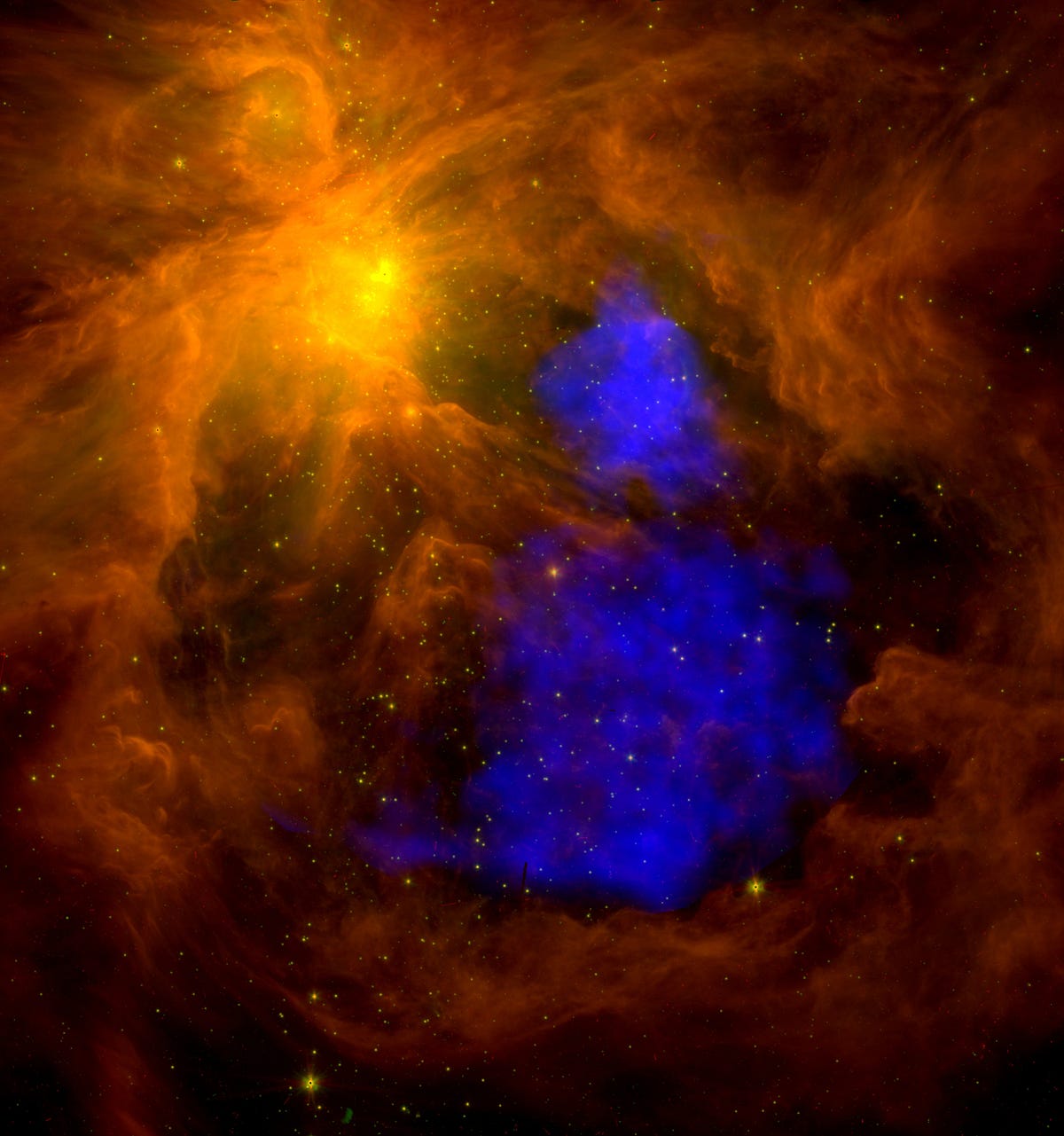
It looks like a ghostly combination of Sauron from LOTR and the Sorceress from He-Man to me. Want to see a huge version of this image?
Let me show you just a slice through the middle.

How does this happen?
When stars form in nebulae like this one — and this is on the large-ish side of common star-forming regions, with 1000s of new stars inside already — the hottest, brightest stars radiate fiercely in the Ultraviolet. In particular, there’s one star inside that’s some 40 times as massive as our Sun, with surface temperatures of a whopping 40,000 °C. It’s also emitting incredible winds that slam into the surrounding interstellar gas, heating it to millions of degrees, which cause the emission of X-rays! It’s only where that superheated gas has a clean line-of-sight to our eyes (i.e., with only very cold gas in the way) that it doesn’t get absorbed. In reality, the entire nebula is probably filled with these X-rays.
So when you see this winter sight on these chilly winter nights, I hope this helps you think warm thoughts! Have a great winter weekend (I’m snowed in here), and enjoy all the sights & sounds this time of the year has to offer!





